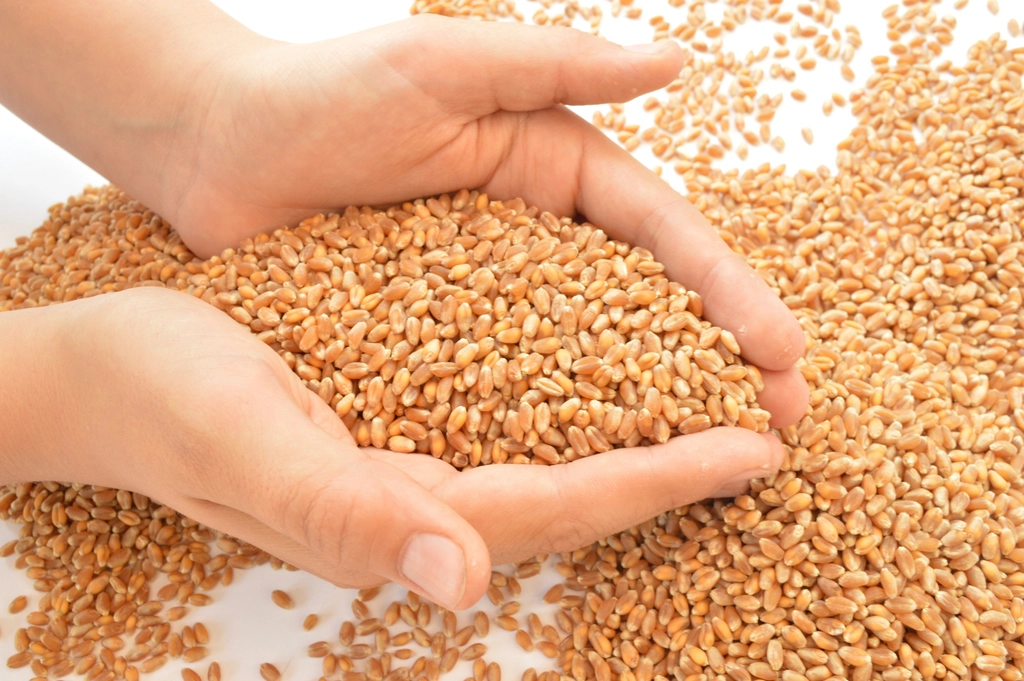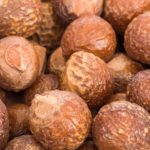Track Your Order | Free Delivery > ₹ 499
Sprouted Wheat Flour Benefits, Comparison, How to Make It, and More
Sprouted wheat flour is becoming increasingly popular for its health benefits, digestibility, and better baking qualities. It’s made from whole wheat grains that have started to germinate—a natural process that activates enzymes and boosts nutritional value.

In this article, we’ll explore:
- Sprouted wheat flour benefits
- How to make sprouted wheat and sprouted wheat flour
- Sprouted wheat flour vs regular wheat flour
- Is sprouted bread good for diabetics?
- Glycemic index of sprouted wheat flour
- Sprouted wheat flour recipes
- And more, based only on scientific studies.
Sprouted Wheat Flour Benefits
Sprouted wheat flour offers significantly better nutrition than regular whole wheat flour. When wheat grains are soaked and allowed to sprout, the natural enzymes break down antinutrients and create more accessible vitamins and minerals. Here’s what research shows:
Higher Vitamins and Minerals
- Folate (vitamin B9) increases by 3–4×, supporting pregnancy health and cell function.
- Vitamin C appears during sprouting (not present in dry wheat), with values between 5–55 mg per 100g.
- B vitamins like thiamine, riboflavin, and niacin also rise substantially.
- Iron and zinc become easier for the body to absorb, thanks to the breakdown of phytic acid (an absorption-blocking compound).
📚 Source: [Zhang et al., 2015; Repo-Carrasco-Valencia et al., 2010]
➤ More Antioxidants and Fiber
Sprouting boosts phenolic compounds, which help protect cells from damage. You also get more resistant starch and dietary fiber, which support gut health and slow sugar absorption.
📚 Source: [Kaseleht et al., 2011; Hung et al., 2022]
Is Sprouted Wheat Bread Good for Diabetics?
Yes—sprouted bread can be better for diabetics than regular bread. This is because:
- It has a lower glycemic index, meaning it doesn’t spike blood sugar as much.
- The increased resistant starch slows digestion and glucose release.
- Some studies found improved post-meal blood sugar control, though results vary depending on the recipe.
So, while not a cure-all, it can be part of a diabetic-friendly diet.
📚 Source: [Martins et al., 2021; Belobrajdic et al., 2014]
Sprouted Wheat Flour vs Wheat Flour
Here’s how sprouted wheat flour compares to regular wheat flour:
| Feature | Sprouted Wheat Flour | Regular Wheat Flour |
|---|---|---|
| Vitamin Content | Higher (esp. B and C vitamins) | Lower |
| Mineral Absorption | Better (less phytic acid) | Lower |
| Antioxidants | Increased | Normal |
| Enzymes | Activated (pre-digested starch/protein) | Dormant |
| Glycemic Index | Lower | Higher |
| Flavor | Slightly sweeter, nuttier | Milder |
| Baking Behavior | Softer crumb, sweeter dough | Stronger gluten structure |
📚 Source: [Zhou et al., 2022; Hübner & Arendt, 2013]
Glycemic Index of Sprouted Wheat Flour
The glycemic index (GI) of sprouted wheat flour is typically lower than regular flour. That means the carbs are digested more slowly, helping prevent blood sugar spikes. One study reported more resistant starch and lower starch digestibility, both of which contribute to a healthier glycemic response.
📚 Source: [Martins et al., 2021]
🧑🍳 How to Make Sprouted Wheat and Sprouted Wheat Flour
Making your own sprouted wheat flour is easy and can be done at home:
✅ How to Make Sprouted Wheat:
- Soak whole wheat berries in water for 8–12 hours.
- Drain and rinse, then keep them in a jar or tray, rinsing every 8–12 hours.
- Let sprout for 1–2 days until tiny white sprouts appear (about 1/4 inch).
- Dry thoroughly in a dehydrator or oven at low temp (~100°F / 38°C).
✅ How to Make Sprouted Wheat Flour:
- Once completely dry, grind the sprouted wheat in a grain mill or high-speed blender.
- Store in a cool, dry place or refrigerate to preserve freshness.
Use this flour in your favorite recipes or substitute part of regular flour for added benefits.
🥖 Sprouted Wheat Flour Recipes to Try
Sprouted wheat flour works great in:
- Bread – Replace 20–30% of your flour for best texture.
- Pancakes & waffles – Adds sweet, nutty flavor.
- Cookies & muffins – Slightly softer texture, natural sweetness.
- Pizza dough – Crusts with a flavorful twist.
Tip: Too much sprouted flour (over 30–40%) may make your dough overly sticky or soft because of the high enzyme activity. So start small and experiment.
🧠 Final Thoughts: Why Use Sprouted Wheat Flour?
Sprouted wheat flour is not just a trend—it’s a functional, nutrient-packed ingredient with real scientific backing. Here’s what sets it apart:
- Higher vitamins, antioxidants, and mineral absorption
- Better digestibility and lower glycemic index
- Suitable for those managing blood sugar
- Adds unique flavor and softness to baked goods
By understanding how to make and use it, you can enjoy both health and taste in your everyday cooking.
1. Is sprouted wheat flour healthier than regular wheat flour?
Yes. Sprouted wheat flour is richer in vitamins (especially B vitamins and vitamin C), more bioavailable minerals (like iron and zinc), and higher antioxidant levels. It also contains more resistant starch, which supports digestive health and helps regulate blood sugar. These benefits are scientifically backed by multiple studies.
2. Can people with diabetes eat sprouted wheat flour or bread?
Yes, in moderation. Research shows that sprouted wheat flour has a lower glycemic index than regular wheat flour, meaning it raises blood sugar more slowly. Breads made with sprouted wheat also have more resistant starch, which helps reduce post-meal blood sugar spikes. It can be a smart choice for people managing type 2 diabetes, especially when part of a balanced diet.
3. How much sprouted wheat flour should I use in baking?
Start by replacing 10–30% of the flour in your recipe with sprouted wheat flour. This gives you the nutritional benefits without affecting texture too much. Using 100% sprouted flour is possible but may require adjustments due to its high enzyme activity, which can make dough stickier and bread softer.
🔍 Sources (Peer-Reviewed Journals Only):
- Zhang et al., Food Chemistry, 2015
- Hung et al., Journal of Cereal Science, 2022
- Martins et al., Foods, 2021
- Kaseleht et al., Food Chemistry, 2011
- Zhou et al., Food Research International, 2022
- Hübner & Arendt, Food Microbiology, 2013
- Repo-Carrasco-Valencia et al., International Journal of Food Sciences and Nutrition, 2010
Discover more from Dhatu
Subscribe to get the latest posts sent to your email.




